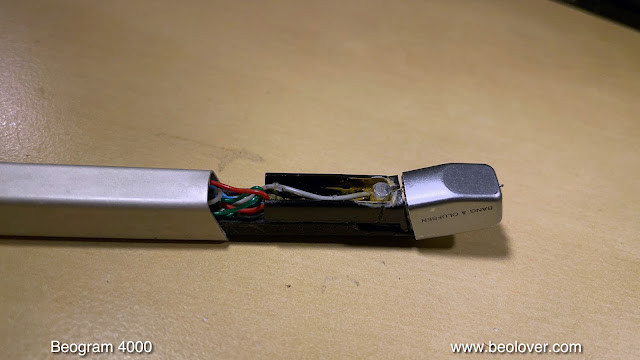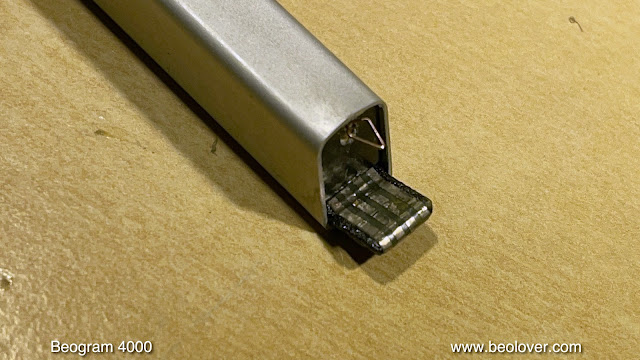The Beogram 4002 (5503) that I am currently restoring had a damaged carriage position sensor photo resistor housing, which had broken off mounting tabs:
Featured Post
Beolover SyncDrive: DC Platter Motor Replacement for Beogram 4002 and 4004 (Type 551x and 552x)
Late Beogram 4002 and the 4004 (Types 551x and 552x), which have DC platter motors instead of the earlier synchronous AC motors usually suff...
Thursday, December 1, 2022
Beogram 4002 (5503): Restoration of the Carriage Position Sensor - Development of a New Beolover Part
Saturday, May 21, 2022
Beogram 4000: MMC Cartridge Mount Restoration
I recently received the tonearm of a Beogram 4000 located in Western Australia. Like in many Beogram 4000s the MMC cartridge mount had broken off.
This Beogram still had the 'old style' tonearm, that elegantly plugs into the base of the arm, instead of featuring soldered signal wiring. However, this makes it more difficult to replace the MMC mount since the insert that goes into the aluminum profile tube has an adapter at the rear that has spring loaded contacts that 'grab' the circuit board that reaches into the back end of the arm to make contact. This shows the sad condition of the MMC mount as received:
Monday, September 21, 2020
Beogram 4000: Replacement of Broken Off MMC Cartridge Mount with 3D Printed Replacement Assembly
I recently received the tonearm of a Beogram 4000 from Belgium. It had a broken off MMC cartridge mounting tab. Sadly, this happens to many Beogram 4000s since they used a plastic that seems to go brittle over the years. Luckily this Beogram 4000 has the old-style MMC adapter insert that connects via spring terminals to a narrow circuit board that sticks in to the arm from the back. This allows easy removal of the arm by just removing one screw and pulling it out. This shows the arm as received:
The plastic tab that inserts into the MMC cartridges is missing and only the flex PCB with the contact traces remained:
Monday, August 10, 2020
Beogram 4000: Replacement of an 'Old Style' MMC Cartridge Mount with a New 3D Printed Assembly
The Beogram 4000 that I am currently restoring also had a cracked MMC cartridge mount. Unfortunately, this is a problem common in many Beogram 4000 since the plastic B&O used for the cartridge mount seems to get brittle as it ages. Later Beogram 4002 and 4004 have cartridge mounts made from a different plastic, and it rarely happens that they break.
The first step was to remove the tone arm to be able to push the plastic assembly out of the arm from the back. Later 4000s have a mount that is glued in and one can remove it by 'cooking' the arm for a while in boiling water to soften the glue until one can push the mount out. More details about this procedure is posted in this blog post.
This post is about doing this replacement for an 'old style' arm, where the mount assembly is bolted into the aluminum profile of the arm. This shows the back end of the arms. The tone arm up front can be removed by taking out the screw that holds the aluminum profile to the arm base:




















































